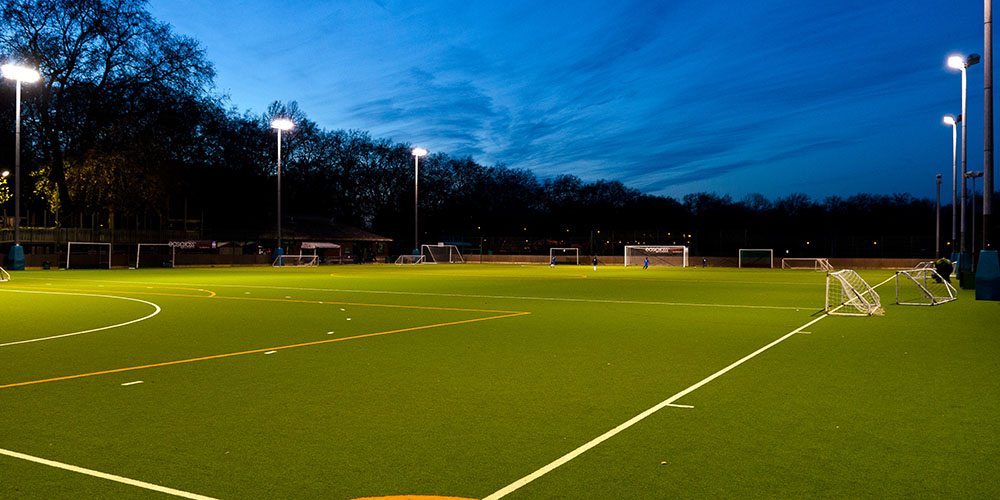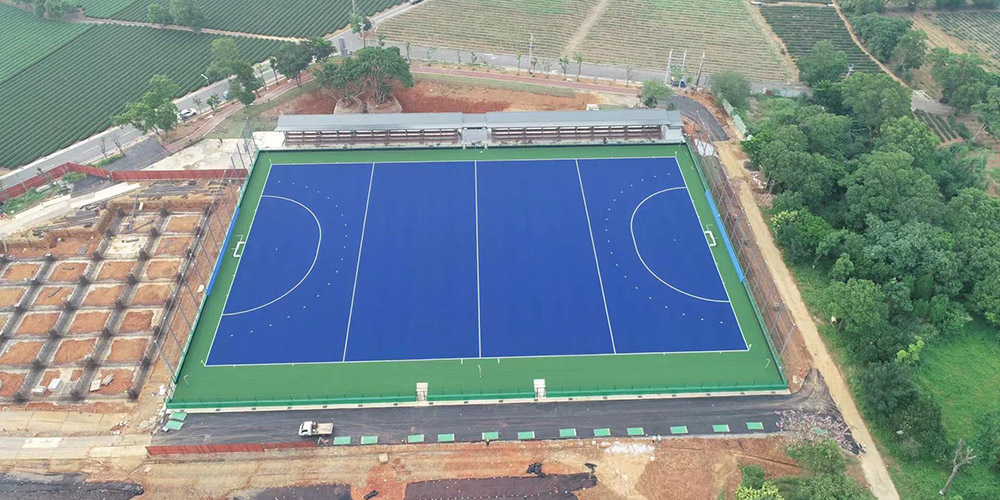An international organization called the International Hockey Federation, or FIH sets the regulations for hockey matches. The FIH Rules Committee examines the rules that apply to a hockey game. Some parts that make up the rules are described here.
The Field Rules
- Rectangular hockey fields should be 91.4 meters long and 55 meters wide.
- The width of each line drawn on the field should be 75 mm. Sidelines show which sides of the field are longer, while back lines show which ones are shorter.
- The goal lines are the portions of the back lines that lie in front of the goal posts.
- There should be a center line in the center of the playing area. There must be flag posts that are 1.2 to 1.5 meters tall at each corner of the field.
- Goals are placed near the backlines but outside of the playing area.
Hockey Field Color Schemes
The FIH has approved the green and blue artificial turfs used on hockey fields. Players mostly use the green turf to play the game. When this type of synthetic field first came out, players who liked playing on its flat surface and low, even turf height, welcomed it with open arms.
Green hockey turf has several benefits that include:
- Better ball control
- Superb foot grip and less skin burns
- Impressive roll speed and ball accuracy
- Reduce friction in dry or wet weather
- Fine shock-absorbing ability
- Durable and flexible fibers
People understood blue turf’s advantages and superior quality when the LOCOG, or London Organizing Committee, approved its use instead of green turf. The critical distinction is that the blue turf offered a contrast that made it easier to see the ball and demonstrated its superiority as a synthetic athletic field.

The blue surface may clearly distinguish the yellow ball and the designated pitch. Additionally, the stark contrast makes it easy for players to adjust and play with clearer vision. Following the 2012 London Olympics, numerous sports leagues supported the “blue turf” concept. It received significant praise after most players praised the hockey-specific colored artificial turf.
Why Was the Olympic Pitch in London Blue?
The field at the 2012 Summer Olympics in London was blue. It was the first time a color other than traditional green was used for play at the FIH World Games and Olympics. Debbie Jevans, the director of sports for LOCOG, stated that “innovation” was their main priority. They tried to develop a new idea to help professional, fast-paced games and be interesting to players and spectators.
The FIH sought to promote dynamism in sports, which sparked a lot of favorable comments from the general public following the Olympics. Most viewers mentioned feeling awestruck while watching. They claimed they could watch matches for longer periods without getting bored or worn out.
Contrary to typical green turf, spectators reported it was quite simple to observe the game from distances of hundreds of meters. Some people claimed they had the impression of being on the grounds physically.
The game is made more exciting by the artificial green and blue turf. The complimentary colors of the contrasted blue turf and yellow ball make it very engaging and exciting. Players have outstanding and uncomplicated engagement, while viewers can enjoy improved views.
